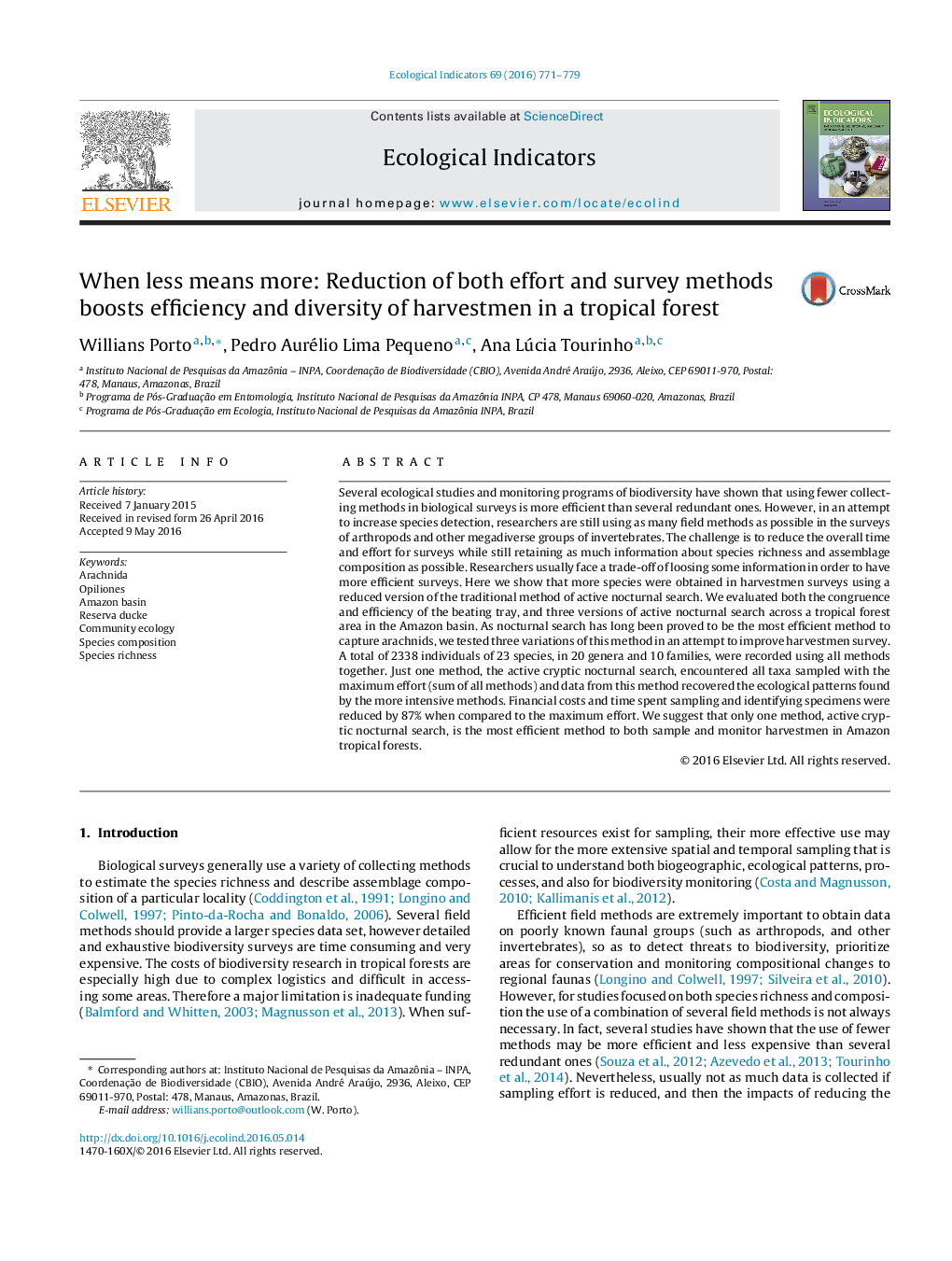| Article ID | Journal | Published Year | Pages | File Type |
|---|---|---|---|---|
| 6293346 | Ecological Indicators | 2016 | 9 Pages |
Abstract
Several ecological studies and monitoring programs of biodiversity have shown that using fewer collecting methods in biological surveys is more efficient than several redundant ones. However, in an attempt to increase species detection, researchers are still using as many field methods as possible in the surveys of arthropods and other megadiverse groups of invertebrates. The challenge is to reduce the overall time and effort for surveys while still retaining as much information about species richness and assemblage composition as possible. Researchers usually face a trade-off of loosing some information in order to have more efficient surveys. Here we show that more species were obtained in harvestmen surveys using a reduced version of the traditional method of active nocturnal search. We evaluated both the congruence and efficiency of the beating tray, and three versions of active nocturnal search across a tropical forest area in the Amazon basin. As nocturnal search has long been proved to be the most efficient method to capture arachnids, we tested three variations of this method in an attempt to improve harvestmen survey. A total of 2338 individuals of 23 species, in 20 genera and 10 families, were recorded using all methods together. Just one method, the active cryptic nocturnal search, encountered all taxa sampled with the maximum effort (sum of all methods) and data from this method recovered the ecological patterns found by the more intensive methods. Financial costs and time spent sampling and identifying specimens were reduced by 87% when compared to the maximum effort. We suggest that only one method, active cryptic nocturnal search, is the most efficient method to both sample and monitor harvestmen in Amazon tropical forests.
Related Topics
Life Sciences
Agricultural and Biological Sciences
Ecology, Evolution, Behavior and Systematics
Authors
Willians Porto, Pedro Aurélio Lima Pequeno, Ana Lúcia Tourinho,
